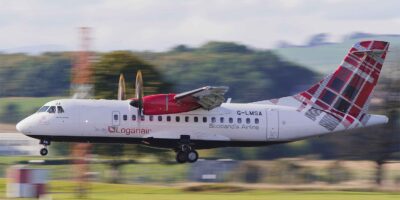So, what’s needed for an ATPL?
The way to the cockpit of an airliner isn’t an easy one. Getting an ATPL requires a number of things, some of which need to be done in a particular order. It’s easy at first to become overwhelmed by the terminology used in the aviation industry, so take the time to learn about the steps that lead to an ATPL.
Medical
First things first: to train for an ATPL, you’ll need to hold a Class 1 UK Medical Certificate (the highest standard). Make sure you’re medically fit to fly before signing up to any training course. Budget up to £750 for an initial Class 1 Medical and around £200 for renewals each year.
Private Pilot Licence (PPL)
If you study modular, your first flying training requirement will be a private pilot licence (PPL), where you’ll learn the basics of flying an aircraft, including your first solo flight.
If you manage to achieve your PPL in the minimum time of 45 hours, it’ll set you back somewhere in the region of £10,000. However, most students take longer, with the UK national average being between 55 and 60 hours. In other words: budgeting £15,000 for a PPL is more realistic.
ATPL theory
The ATPL theory exams cover 13 subjects in huge detail. In other words: there’s a lot to learn, which will take you at least 650 hours of studying. Either study by yourself, via an online distance learning course for £2,000 to £3,000, or pay upwards of £4,000-£6,000 and go with a faster classroom delivered course. Whichever method you choose, you’ll have to achieve passes (75%) in the following subjects:
- Air Law
- Communications (VFR and IFR)
- Principles of Flight
- Aircraft General Knowledge
- Instrumentation
- Meteorology
- General Navigation
- Human Performance and Limitations
- Operational Procedures
- Mass and Balance
- Performance
- Radio Navigation
- Flight Planning and monitoring
An integrated course will usually start with six months in the classroom followed by the exams before any flying. Modular students using distance learning will tend to take between 12 and 18 months depending on the study time available, but as a guide you should plan for about 15 hours a week.
If you choose to follow the modular route you’ll need an ICAO PPL before starting ATPL theoretical knowledge.
Hour building
After obtaining your PPL, you’ll have to spend some time hour building before you’re allowed to go for your CPL. The commercial licence requirements include a minimum of 150 hours flying time.
The price of this hour building hugely depends on the type of aircraft you choose, but budget between £150 and £200 per hour. Some aviation schools offer hour building packages which are a better deal than paying for separate flying hours. While hour building, you’ll probably want to get your Night Rating, which takes at least five hours.
Commercial Pilot Licence (CPL)
The next step up from a PPL, a CPL will teach you to fly professionally with passengers and to a higher degree of piloting skill. This 25-hour course can cost anywhere from £5,000 to £15,000, depending on the aircraft type you use and whether you already hold an Instrument Rating.
As mentioned above, you’ll need to have achieved your PPL, valid theoretical knowledge examinations and have 150 hours under your belt before you can start CPL training.
Multi-Engine Piston (MEP) rating
At some point you’ll need to learn and qualify to fly multi-engine aircraft. This process can be combined with a CPL, Instrument Rating, or conducted separately. A standalone MEP rating could cost anywhere from £4,000 to £8,000, depending on the ATO, aircraft type and other factors.
Instrument Rating (IR)
The IR is another big chunk of work (and money). It allows you to fly under instrument flight rules (IFR), meaning solely with reference to the in-cockpit instrumentation. In other words: with an IR, you can fly in cloud, heavy rain, and other adverse weather conditions.
Most people combine the IR with a multi-engine rating (known as the MEIR, Multi-Engine Instrument Rating), in one training course. Expect to pay between £17,000 and £20,000 for an MEIR.
Upset Prevention and Recovery Training (UPRT)
UPRT is all about preventing an aircraft from entering any kind of unusual attitude and, therefore, also recovering an aircraft if it does end up pointing the wrong way or in an unexpected situation.
Advanced UPRT is a standalone course that is now mandatory. The course usually includes five hours of theoretical learning and three hours of flying. Expect to pay between £1,300 and £2,000 for an AUPRT.
Airline Pilot Standard Multi Crew Cooperation (APS MCC)
The MCC is a mandated course designed to prepare you for operating commercial jet aircraft, since the bulk of your flying experience until now has been on single and multi-engine piston aircraft. It teaches you about the multi-crew environment, airliner flight instrumentation systems, decision making, etc. The more demanding APS MCC is preferred by many employers.
Expect to pay in the region of £4,000 to £6,000 for an MCC course, which is required to apply for multi-crew airline jobs.











